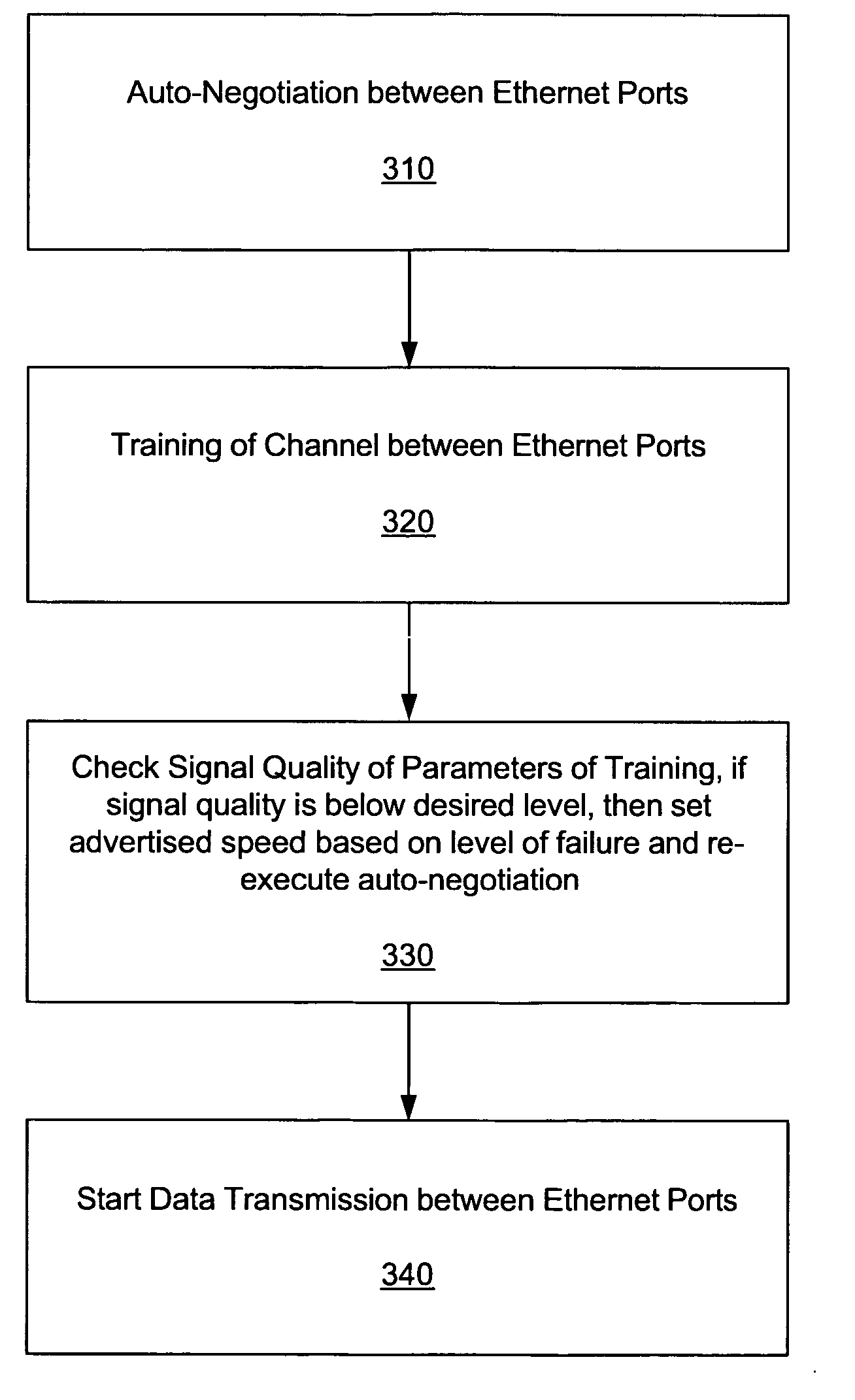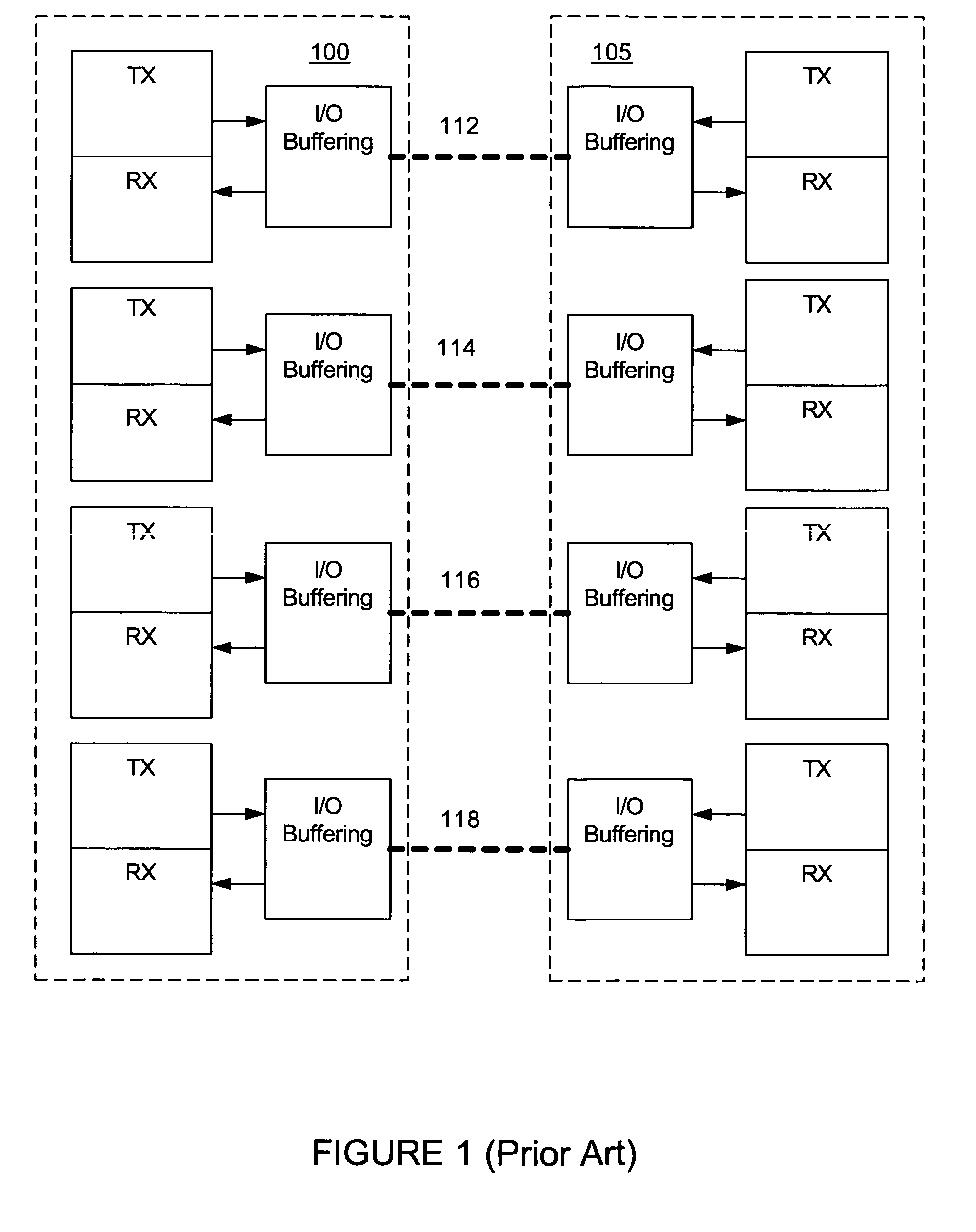Auto-sequencing transmission speed of a data port
a data port and auto-sequencing technology, applied in the field of network communication, can solve the problems of excessively long failure process of initial auto-negotiated speed, increased noise and interference, and increased attenuation, noise and interferen
- Summary
- Abstract
- Description
- Claims
- Application Information
AI Technical Summary
Benefits of technology
Problems solved by technology
Method used
Image
Examples
Embodiment Construction
[0023] As shown in the drawings for purposes of illustration, the invention is embodied in an apparatus and method for auto-sequencing data ports. An exemplary data port includes an Ethernet data port.
[0024] As previously stated, existing Ethernet systems fail a negotiated transmission speed by determining a BER of data transmission. If the BER of the data transmission is determined to be above a desired level, the auto-negotiation is repeated with the same advertised speed. After N number of unsuccessful attempts (typically, for example, five), the negotiated speed is dropped. This process, however, can take a relatively long amount of time. That is, the Ethernet devices go through negotiation, channel training, and data transmission for each attempt. A typical Gigabit system makes five attempts, taking over five seconds. A typical 10 Gigabit system can make five attempts, taking over 12 seconds. After failure, the advertisement of the negotiation lowered to the next lower transmi...
PUM
 Login to View More
Login to View More Abstract
Description
Claims
Application Information
 Login to View More
Login to View More - R&D
- Intellectual Property
- Life Sciences
- Materials
- Tech Scout
- Unparalleled Data Quality
- Higher Quality Content
- 60% Fewer Hallucinations
Browse by: Latest US Patents, China's latest patents, Technical Efficacy Thesaurus, Application Domain, Technology Topic, Popular Technical Reports.
© 2025 PatSnap. All rights reserved.Legal|Privacy policy|Modern Slavery Act Transparency Statement|Sitemap|About US| Contact US: help@patsnap.com



